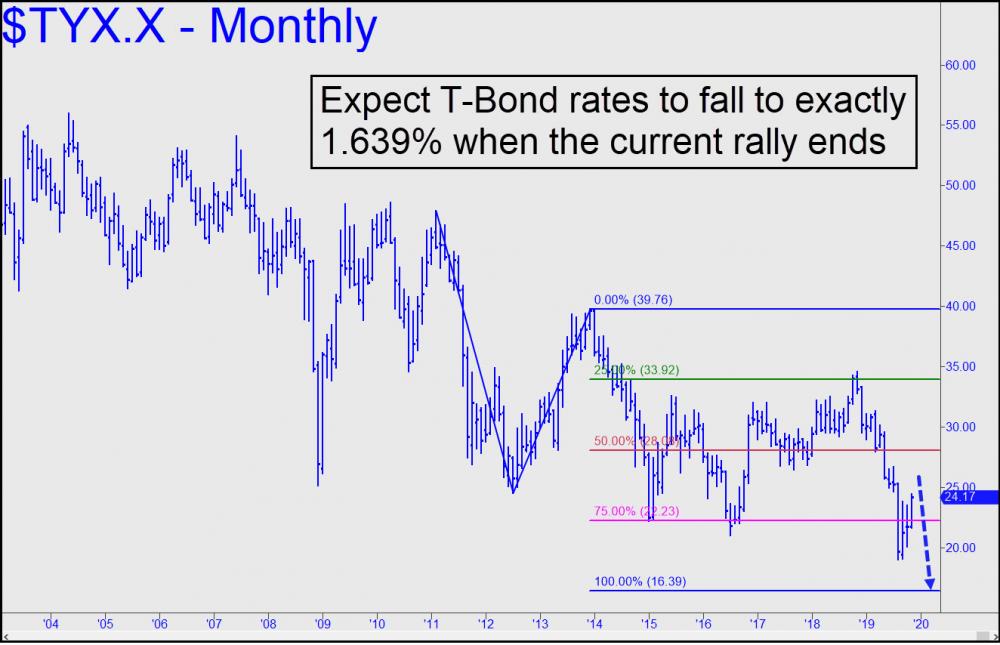 Although some notable long-term bond bulls are close to throwing in the towel as U.S. Treasury yields continue to climb, the chart suggests the bull market begun nearly 40 years ago still has farther to go. Yields on the long bond settled Friday at 2.41%, up from 1.90% in August, while T-Notes have gone from 1.43% to 1.93% over the same time. The rallies have been impressive if not to say scary, since they have subjected hundreds of trillions of dollars of borrowings to a deflationary turn of the screw. The burden of debt promises to lighten before it becomes fatal , however, when the uptrend in interest rates reverses. Is This a Good Thing? Hidden Pivot analysis says relief could come soon, with the 10-Year topping at 1.984% and the 30-Year at 2.477%. How far might they fall thereafter? My forecast calls for major lows at, respectively, 0.84% and 1.64%. This implies that the negative-rate weirdness of Europe will not afflict U.S. debt. Is this a good thing? Don’t ask the ‘experts’, because they don’t understand negative yields any better than the news media hacks who write about it. Sub-zero yields reflect the central banks’ increasingly desperate efforts since the 1990-91 recession to avoid a catastrophic deflation. Predicting they will fail is not exactly rocket science, even if not one observer in a hundred expects this. It often seem as though trade-deal news drives the markets, but how could this be so when we all know that China will never, ever change its crooked ways? Not that it matters. If Trump hadn’t started a tariff war, it would have made little difference in the way a bull market now in its eleventh year behaves; stocks would still be trading about where they are. The only difference is that the con-artists who make their living levitating stocks would have found a different story to drive the short-covering rallies that alone are capable of boosting the broad averages past old highs.
‘Phase One’ Forever!
When we read in the Wall Street Journal that shares have risen because traders supposedly were optimistic on a given day about the tariff talks, we understand that this is poppycock that is not even remotely true. Even so, the hair-trigger reflex of institutional investors is to buy stocks whenever there is the faintest bullish buzz, and to dump them the instant China responds with incredulity. Wednesday’s earth-shaking story was that a meeting to enact phase one of the deal has been pushed out to December. Stocks greeted this discouraging mid-day tidbit with spasms that lasted for all of ten minutes; then they settled back into their wonted, bullish groove. At this rate, the talks will drag on indefinitely without producing any tangible results. Although it has been clear for some time that this is what both sides want, it was not until this afternoon’s gratuitous spasms that investors revealed it is what they want as well.
| 
